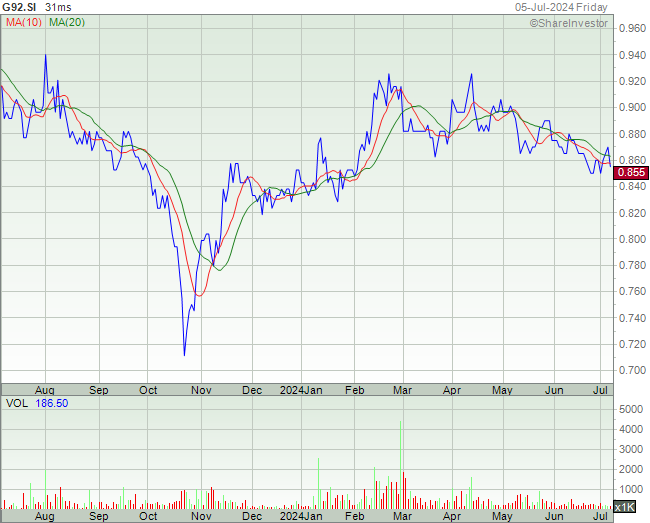Excerpts from NRA Capital's report
| China Aviation Oil’s (CAO) net profit grew 24.7% year-on-year despite a 41% slide in jet fuel prices. Sustained improvements in total volume traded and increased market penetration despite a tough 2015 for oil markets indicate that CAO is a significant outperformer among oil-related stocks.  CAO: The largest purchaser of jet fuel in the Asia Pacific region and the key supplier of imported jet fuel to the PRC’s civil aviation industry, and accounts for more than 90% of PRC's jet fuel imports. Photo: CAO (Singapore) CAO: The largest purchaser of jet fuel in the Asia Pacific region and the key supplier of imported jet fuel to the PRC’s civil aviation industry, and accounts for more than 90% of PRC's jet fuel imports. Photo: CAO (Singapore) |
Takeaway
CAO looks like it has profited very well from both the slide in oil prices as well as the focus on its core jet fuel market. Trading discipline by avoiding large positions in risky calls has been crucial in allowing oil trading companies to maintain profits when oil markets are going down. We are confident that CAO can maintain this level of performance going forward, based on the continued performance of jet fuel and the demonstrated strength of the CAO trading strategy.
Beyond the strengthening of the core jet fuel trading business, it looks like the increased penetration of CAO into other oil markets is serving the company well. Increasing the breadth of CAO supply options allows the company to participate in more markets that increase arbitrage opportunities and reduce specific risks.
While an increase in friction costs is typical for trading companies when expanding their geographical reach, low oil prices now mean that the costs incurred for this greater breadth of operations is low, and therefore gives CAO a lower threshold to clear before reaching profitability.

Prognosis for the future
Oil trading companies profit from volatility more than anything else, and the direction of the oil markets gives CAO significant arbitrage opportunities to work with. The expansion of CAO into other international oil markets is significant because international air travel into China would result in more synergistic opportunities for CAO to form preferential supply deals for airlines which expand their routes. Furthermore, CAO is intending to expand its scope of oil product offerings, which would expand the bargaining power the company has and give it greater flexibility when structuring supply deals and trades.
| Stock 80 c: PE 8.8, Dividend yield 3.8% |
| "CAO trades at S$0.80 which translates to a PER of 8.8x. Dividend of 2 cents gives a dividend yield of 3.8% Compared to its peer CEFC which is trading at 44.5x PER, CAO is undervalued by 80% and is trading at a discount 22.7% to its 7-year historical PER average of 11x. "While the comparison to CEFC is not particularly useful due to the abnormal trading pattern of CEFC stock, we find that the historical discount offers a clue as to the trading price that CAO should be more accurately assessed by. Investors looking at an oil and gas related stocks can consider the investment merits of CAO." -- NRA Capital |
In terms of major risks for CAO, we noted that their prudent trading strategy has effectively squared off much risk of major upside or downside for CAO. A cursory analysis of the working capital of CAO indicate that they likely have about 1 to 2 months of inventory that they are trading and working with at any time, which means that CAO is not engaging in trading strategies that have elements of long term risks. As such, we think that CAO is highly protected against downside risks.
Strategically we think that CAO can maintain a positive growth momentum. Technology and regulatory trends for motor gas and marine gas would lead to potential disruptions in these markets, but the economics of aviation gas indicate greater longevity for oil based aviation fuel. Expanding into other oil sectors would increase the options and the breadth of the spectrum of oil products CAO operates in, but the secure and growing volume of aviation fuel that CAO trades will likely lead to increased and improved revenue performance going forward.
Full report here.





